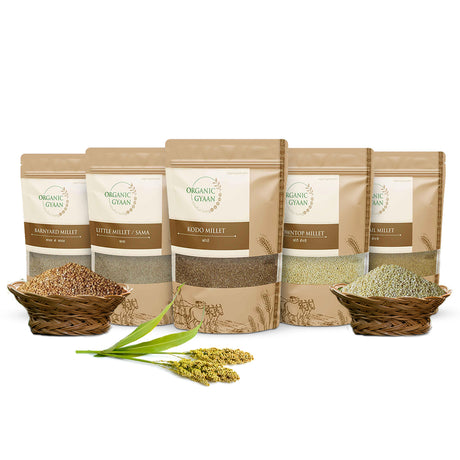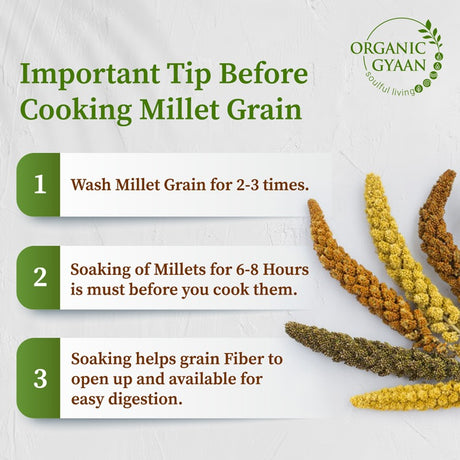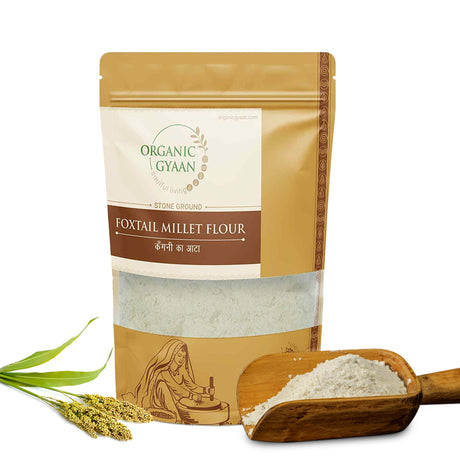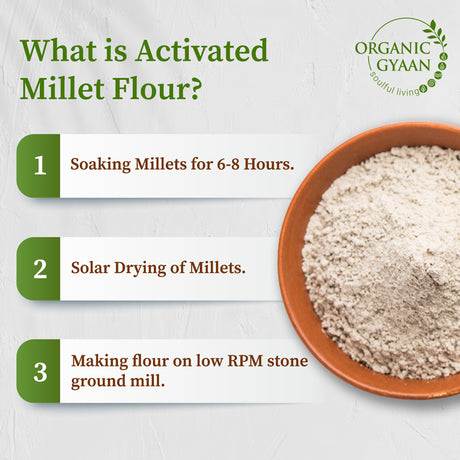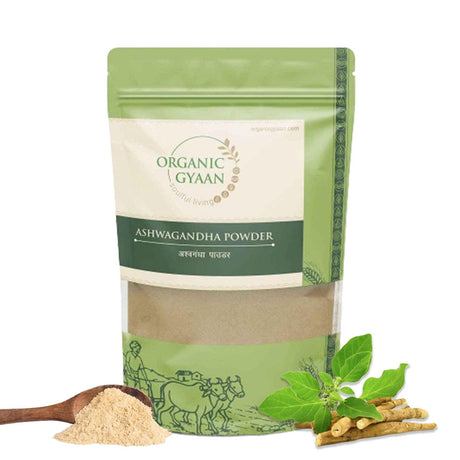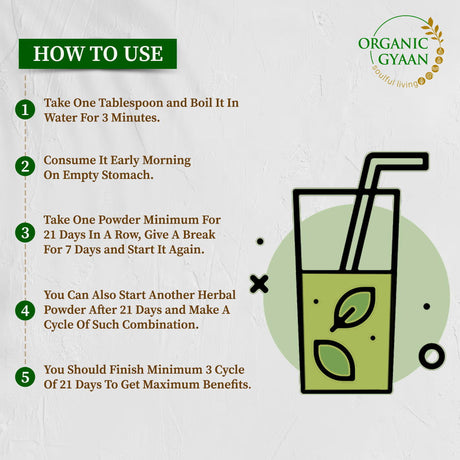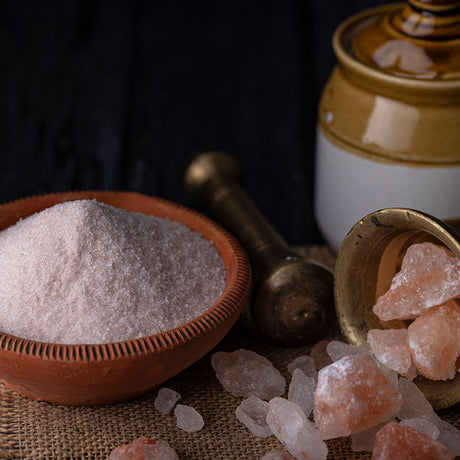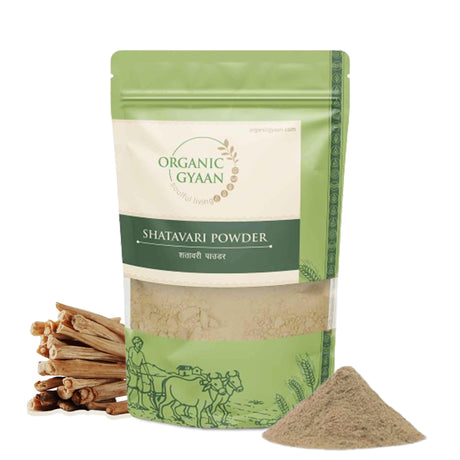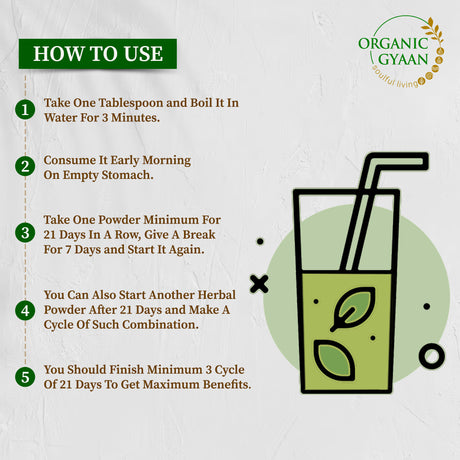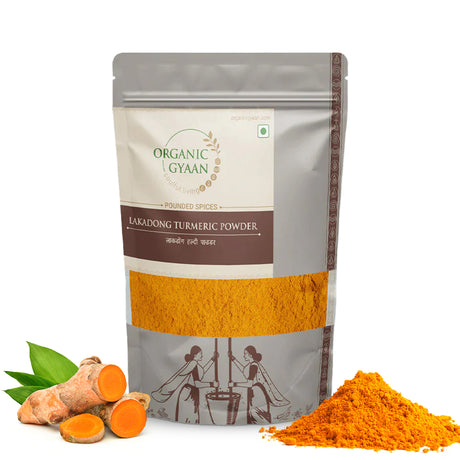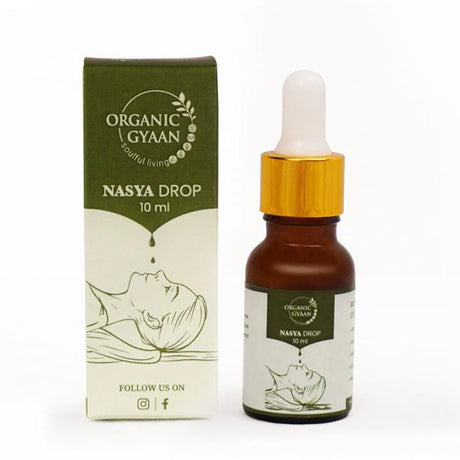मधुमेहासोबत जगणे म्हणजे दररोज काळजीपूर्वक अन्न निवडणे - विशेषतः जेव्हा कार्बोहायड्रेट्सचा विचार केला जातो. विशेषतः नाश्ता करणे थोडे अवघड असू शकते. बरेच पारंपारिक पर्याय साखर आणि प्रक्रिया केलेले कार्बोहायड्रेट्सने भरलेले असतात, ज्यामुळे रक्तातील साखर लवकर वाढते. पण जर असा उबदार, पौष्टिक नाश्ता असेल जो खरोखर रक्तातील साखरेचे संतुलन राखू शकेल तर?
ओट्स हे पारंपारिक आवडते पदार्थ आहेत, जे त्यांच्या फायबर, आरामदायीपणा आणि साधेपणासाठी ओळखले जातात. पण मोठा प्रश्न असा आहे की: ओटमील मधुमेहींसाठी चांगले आहे का? उत्तर हो आहे - योग्य दृष्टिकोनासह. या ब्लॉगमध्ये, आपण मधुमेहींसाठी ओटमील हा मधुमेह-अनुकूल आहाराचा एक शक्तिशाली भाग का असू शकतो हे शोधू, तसेच ते योग्य प्रकारे कसे उपभोगता येईल याचे टिप्स देखील पाहू.
ओटमील म्हणजे काय?
ओटमील हे ओट्सपासून बनवले जाते - फायबर, वनस्पती-आधारित प्रथिने आणि आवश्यक पोषक तत्वांनी भरलेले संपूर्ण धान्य. ते कसे प्रक्रिया केले जातात यावर अवलंबून, ओट्स वेगवेगळ्या स्वरूपात येतात:
- स्टील-कट ओट्स : कमीत कमी प्रक्रिया केलेले आणि सर्वात जास्त तंतुमय. ते शिजण्यास जास्त वेळ घेतात परंतु त्यांचा ग्लायसेमिक इंडेक्स (GI) कमी असतो.
- रोल केलेले ओट्स : चपटे आणि वाफवलेले, ते जलद शिजतात आणि तरीही एक चांगला पर्याय आहेत.
- झटपट ओट्स : जलद शिजवण्यासाठी खूप प्रक्रिया केलेले, परंतु त्यात अनेकदा साखर आणि मीठ जोडले जाते - मधुमेहासाठी कमी आदर्श.
प्रत्येक प्रकारच्या ओट्सचे स्वतःचे स्थान असते, परंतु रक्तातील साखरेचे व्यवस्थापन करण्यासाठी, कमी प्रक्रिया केलेले ओट्स सहसा चांगले असतात.
मधुमेहींसाठी ओटमील चांगले आहे का? हो—का ते येथे आहे
ओटमीलचे अनेक आरोग्य फायदे आहेत जे मधुमेहावर नियंत्रण ठेवणाऱ्या लोकांसाठी विशेषतः मौल्यवान आहेत. तुमच्या रक्तातील साखरेच्या प्रवासात ओट्सला एक मजबूत सहयोगी का बनवते ते जवळून पाहूया.
१. रक्तातील साखर स्थिर ठेवण्यास मदत करते
ओटमीलमध्ये विरघळणारे फायबर जास्त असते, विशेषतः बीटा-ग्लुकन, जे पचन आणि साखरेचे शोषण मंदावते. याचा अर्थ साखर तुमच्या रक्तप्रवाहात हळूहळू प्रवेश करते, ज्यामुळे रक्तातील साखरेची अचानक वाढ रोखली जाते.
दिवसाच्या शेवटी ग्लुकोजची पातळी स्थिर राहिल्याने उर्जेची कमतरता आणि साखरेची तीव्र इच्छा टाळण्यास मदत होते. या स्लो-रिलीज इफेक्टमुळे ओटमील नाश्त्यासाठी एक आदर्श पर्याय बनतो. रक्तातील साखर आणि भूक दोन्ही नियंत्रित करण्यासाठी ते विशेषतः उपयुक्त आहे. सतत उर्जेची आवश्यकता असलेल्या मधुमेहींसाठी ओटमील चांगले आहे का? हो, काळजीपूर्वक बनवल्यास.
२. हृदयाच्या आरोग्यास समर्थन देते
हृदयाचे आरोग्य आणि मधुमेह एकमेकांशी जोडलेले असतात - मधुमेह असलेल्या लोकांना हृदय व रक्तवाहिन्यासंबंधी समस्या होण्याची शक्यता जास्त असते. ओट्समध्ये असलेले विरघळणारे फायबर जे रक्तातील साखरेला मदत करते ते एलडीएल (वाईट) कोलेस्ट्रॉलची पातळी कमी करण्यास देखील मदत करते.
एलडीएल कोलेस्ट्रॉल कमी केल्याने धमनींचे आरोग्य चांगले राहते आणि हृदयरोगाचा धोका कमी होतो. शिवाय, ओट्समध्ये अँटीऑक्सिडंट्स आणि दाहक-विरोधी गुणधर्म असतात. मधुमेहींसाठी ओटमीलचा नियमित समावेश केल्याने सौम्य, अन्न-प्रथम मार्गाने हृदयाच्या एकूण आरोग्यास मदत होऊ शकते.
३. तुम्हाला जास्त वेळ पोट भरल्यासारखे वाटण्यास मदत करते
ओट्स हळूहळू पचतात, म्हणजेच जेवणानंतर जास्त वेळ पोट भरलेले राहण्यास मदत करतात. यामुळे जेवणादरम्यान जास्त खाणे किंवा स्नॅकिंग टाळता येते - विशेषतः साखरयुक्त पदार्थांवर.
पोटभरल्याची भावना वजन नियंत्रणात ठेवण्यास देखील मदत करते, जी मधुमेहाच्या व्यवस्थापनात महत्त्वाची भूमिका बजावते. सकाळी एक वाटी ओटमील खाल्ल्याने तुम्हाला दुपारच्या जेवणापर्यंत ताकद मिळू शकते. दिवसभर संतुलित खाण्याच्या सवयी राखण्याचा प्रयत्न करताना ही तृप्तता महत्त्वाची असते.
४. दीर्घकाळ टिकणारी ऊर्जा प्रदान करते
रिफाइंड कार्बोहायड्रेट्स जे जलद ऊर्जा देतात आणि नंतर क्रॅश होतात त्यांच्या विपरीत, ओट्स हे कॉम्प्लेक्स कार्बोहायड्रेट्स आहेत. ते हळूहळू विघटित होतात, ज्यामुळे काही तासांपर्यंत सतत उर्जेचा पुरवठा होतो. यामुळे तुमची ऊर्जा पातळी संतुलित राहते आणि तुमचे मन एकाग्र राहते.
सकाळी उर्जेची कमतरता नाही, इंधन भरण्यासाठी नाश्त्याची गरज नाही. ओट्स दिवसाची सुरुवात इतकी चांगली का करतात याचे एक कारण आहे, विशेषतः ज्यांना रक्तातील साखरेची पातळी स्थिर आणि सतत उर्जेची आवश्यकता असते त्यांच्यासाठी.
५. निरोगी पचनास समर्थन देते
ओटमीलमध्ये नैसर्गिकरित्या विरघळणारे आणि अघुलनशील दोन्ही प्रकारचे फायबर असते, जे नियमित आतड्यांच्या हालचालींना चालना देण्यास मदत करते. पोषक तत्वांचे शोषण आणि एकूणच आरोग्यासाठी निरोगी पचनसंस्था आवश्यक आहे.
मधुमेह असलेल्यांसाठी, आतड्यांचे आरोग्य शरीर रक्तातील साखर आणि जळजळ किती चांगल्या प्रकारे नियंत्रित करते यावर देखील भूमिका बजावते. ओट्स पोटासाठी देखील सौम्य असतात आणि क्वचितच पोटफुगी निर्माण करतात. खरं तर, ते पचनसंस्थेला शांत करू शकतात आणि कालांतराने आतड्यांचे आरोग्य राखू शकतात.
लक्ष ठेवण्यासारखे तोटे
ओटमील हा एक पौष्टिक पर्याय असला तरी, त्याचे संभाव्य तोटे लक्षात ठेवणे महत्त्वाचे आहे - विशेषतः जर ते विचारपूर्वक तयार केले नसेल तर.
१. त्यात अजूनही कार्बोहायड्रेट असतात
हो, ओटमीलमध्ये कॉम्प्लेक्स कार्बोहायड्रेट्स असतात, पण तरीही ते कार्बोहायड्रेट्स असतात. शिजवलेल्या ओट्सच्या एक कपमध्ये सुमारे ३० ग्रॅम कार्बोहायड्रेट्स असतात. ते व्यवस्थापित करण्यायोग्य आहे, परंतु रक्तातील साखर जास्त वाढू नये म्हणून योग्य प्रमाणात खाणे महत्वाचे आहे.
२. इन्स्टंट ओट्स रक्तातील साखर जलद वाढवू शकतात.
जास्त प्रक्रिया केलेले ओट्स—जसे की इन्स्टंट ओटमील—जसे की ते जलद पचतात, ज्यामुळे रक्तातील साखरेचे प्रमाण लवकर वाढते. त्यात अनेकदा साखर, मीठ आणि प्रिझर्वेटिव्ह्ज देखील जोडले जातात. स्टील-कट किंवा रोल केलेले ओट्स निवडणे चांगले, ज्यांचा ग्लायसेमिक इंडेक्स कमी असतो. मधुमेहींसाठी ओटमीलचा विचार करताना हे आवश्यक आहे.
३. टॉपिंग्ज चोरटे असू शकतात
ओट्सचा साधा वाटी उत्तम आहे. पण जेव्हा तुम्ही त्यात ब्राऊन शुगर , मध , सिरप, क्रीम किंवा सुकामेवा घालायला सुरुवात करता तेव्हा कार्ब आणि कॅलरीजची संख्या झपाट्याने वाढू शकते. हे अॅड-इन्स आरोग्य फायदे पूर्णपणे रद्द करू शकतात. दालचिनी , नट, बिया आणि बेरी यांसारख्या नैसर्गिक टॉपिंग्जना चिकटून राहा.
४. प्रत्येकासाठी नाही
गॅस्ट्रोपेरेसिस असलेल्या लोकांना, ज्या स्थितीत पचन उशिरा होते, त्यांना ओट्ससारखे उच्च फायबरयुक्त पदार्थ अस्वस्थ वाटू शकतात. जर तुम्हाला ही स्थिती असेल, तर ओट्सला तुमच्या आहाराचा नियमित भाग बनवण्यापूर्वी आरोग्य सेवा प्रदात्याशी बोला.
ओटमील स्मार्ट पद्धतीने कसे तयार करावे
ओटमील ते कसे बनवले जाते तेवढेच आरोग्यदायी असते. तुमच्या रक्तातील साखरेसाठी ते कसे काम करायचे ते येथे आहे:
१. योग्य ओट्स निवडा
स्टील-कट ओट्स किंवा रोल केलेले ओट्स निवडा. ते शिजण्यास थोडा जास्त वेळ घेतात परंतु रक्तातील साखरेला सर्वोत्तम आधार देतात. फ्लेवर्ड इन्स्टंट ओटमील पॅकेट्स टाळा. मधुमेहींसाठी ओटमील चांगले आहे का असे विचारणाऱ्यांसाठी, ओट्सची निवड मोठी भूमिका बजावते.
२. भाग पहा
साधारण १ कप कोरडे ओट्स खा, म्हणजे साधारण १ कप शिजवले जाते. त्यामुळे तुम्हाला जास्त प्रमाणात न घेता निरोगी कार्बोहायड्रेट्स मिळतात.
३. प्रथिने आणि निरोगी चरबी घाला
मिसळा:
- एक चमचा नट बटर
- मूठभर चिरलेले काजू किंवा बिया
- ग्रीक दही स्कूपची एक बाजू
हे पदार्थ पचनक्रिया मंदावण्यास आणि रक्तातील साखरेची पातळी स्थिर ठेवण्यास मदत करतात.
४. नैसर्गिकरित्या चव
साखर वगळा आणि त्याऐवजी हे करून पहा:
- दालचिनी - नैसर्गिकरित्या गोड आणि रक्तातील साखर कमी करण्यास मदत करू शकते.
- ताज्या बेरी - साखरेचे प्रमाण कमी आणि अँटिऑक्सिडंट्सने भरलेले
- बदामाचे दूध किंवा पाणी - कॅलरीजशिवाय मलईसाठी
५. या सामान्य चुका टाळा
- प्री-फ्लेवर्ड किंवा इन्स्टंट ओटमील पॅकेट्स
- साखर, मध किंवा सिरप सारखे जास्त गोड पदार्थ
- मोठ्या प्रमाणात सुकामेवा
- फुल-फॅट डेअरी किंवा क्रीम
ओटमीलचे इतर आरोग्य फायदे
ओटमील केवळ रक्तातील साखरेलाच आधार देत नाही तर ते खालील गोष्टींमध्ये देखील मदत करते:
- कोलेस्टेरॉल कमी करणे
- निरोगी वजन व्यवस्थापनास समर्थन देणे
- त्याच्या दाहक-विरोधी गुणधर्मांमुळे त्वचेचे आरोग्य सुधारते.
- उच्च फायबर सामग्रीमुळे कोलन कर्करोगाचा धोका कमी करणे शक्य आहे.
हे एक साधे, पौष्टिक अन्न आहे जे विविध प्रकारे एकूण आरोग्याला हातभार लावते.
अंतिम विचार: तर, ओटमील मधुमेहींसाठी चांगले आहे का?
हो—योग्य पद्धतीने तयार केल्यास, मधुमेह व्यवस्थापनासाठी ओटमील एक उत्तम अन्न आहे. ते रक्तातील साखरेचे प्रमाण नियंत्रित करण्यास मदत करते, हृदयाच्या आरोग्यास समर्थन देते आणि दिवसभर तुम्हाला पोटभर आणि ऊर्जावान ठेवते.
फक्त लक्षात ठेवा:
- योग्य प्रकारचे ओट्स निवडा
- तुमचे भाग संतुलित ठेवा.
- जास्त साखर असलेले टॉपिंग्ज टाळा
- अतिरिक्त आधारासाठी प्रथिने आणि निरोगी चरबी घाला.
तयारीमध्ये थोडी काळजी घेतल्यास, मधुमेही रुग्णांसाठी ओटमील चांगले आहे का? निःसंशयपणे. मधुमेहींसाठी ओटमील दिवसाची एक शक्तिशाली, आरामदायी आणि पौष्टिक सुरुवात असू शकते.


